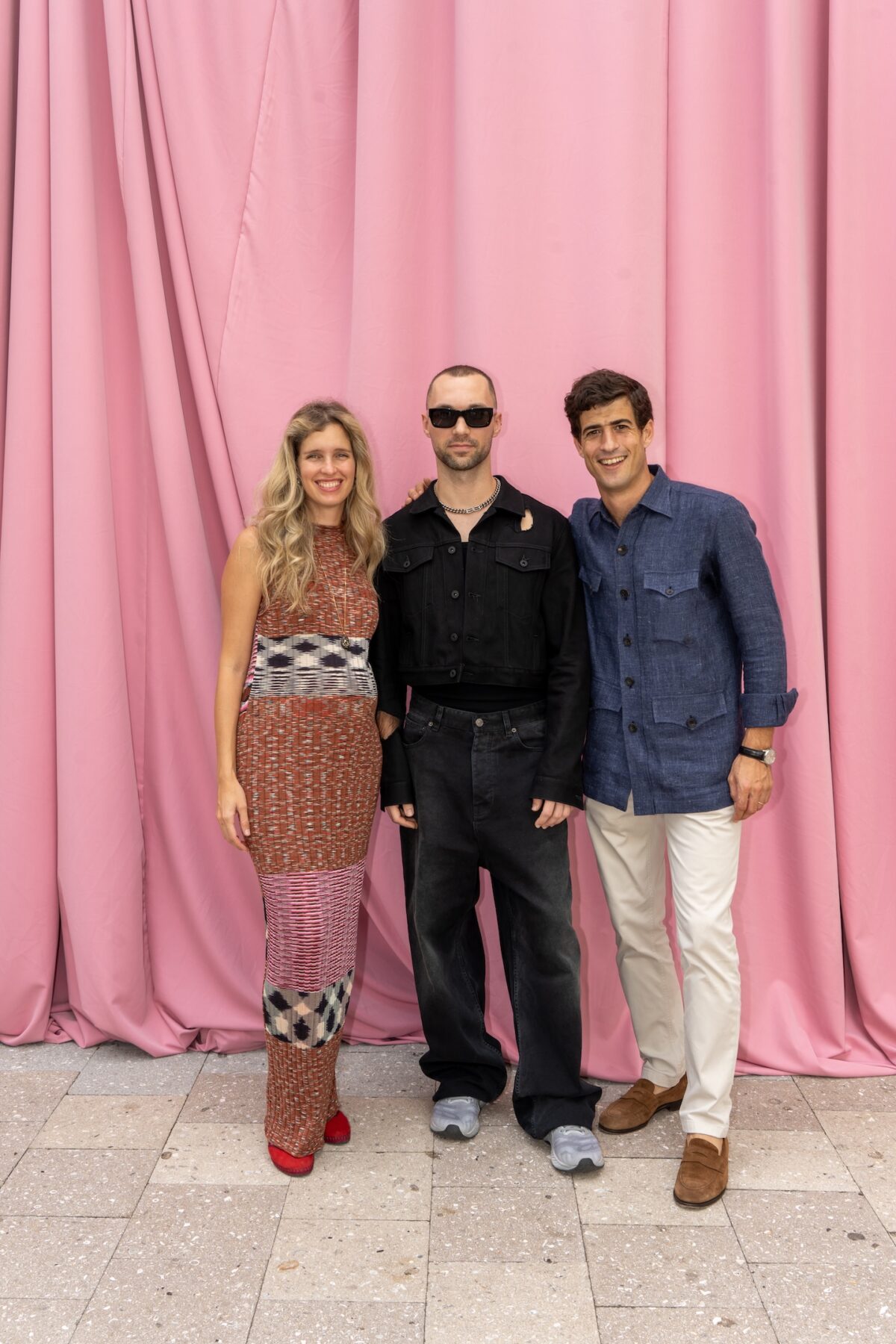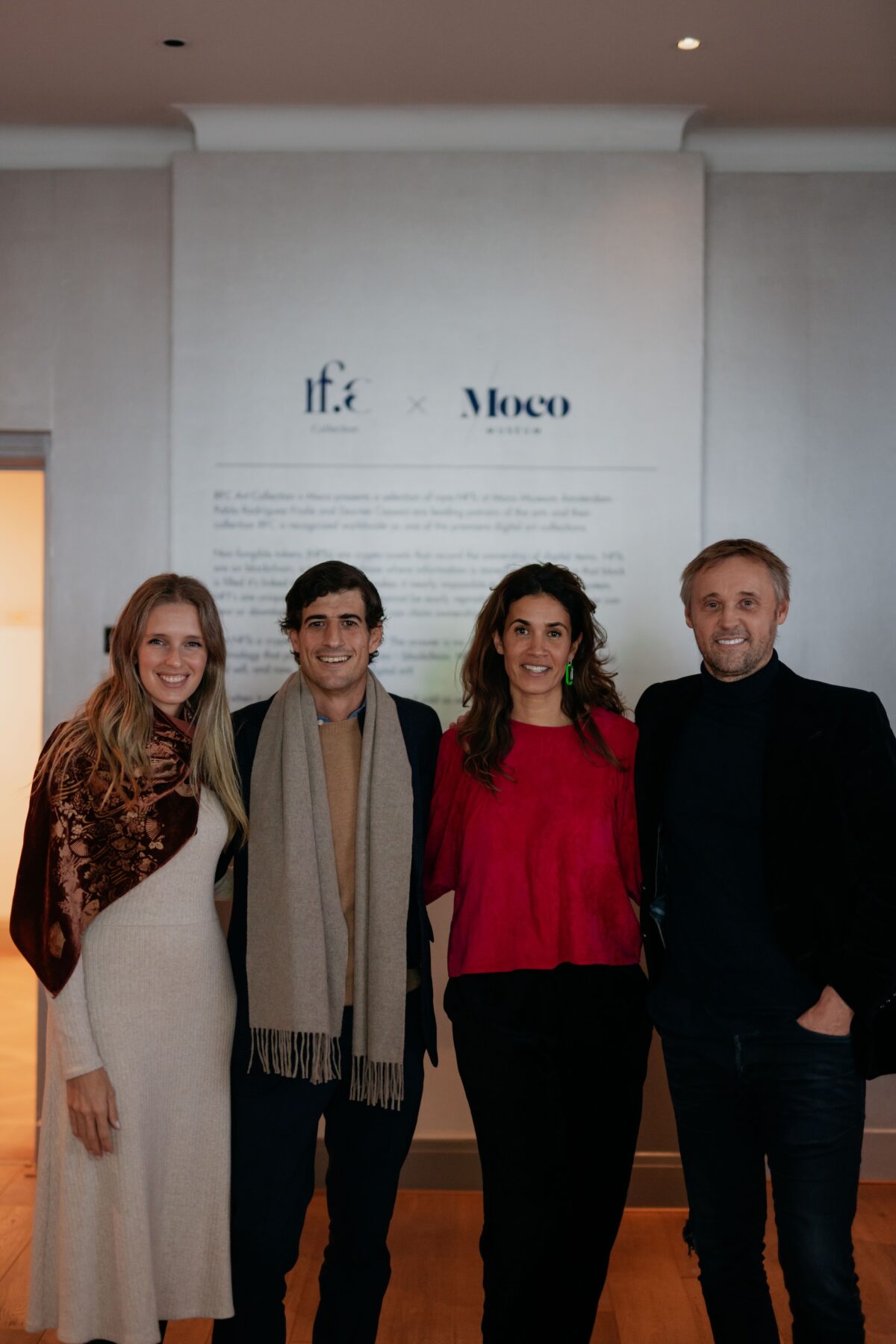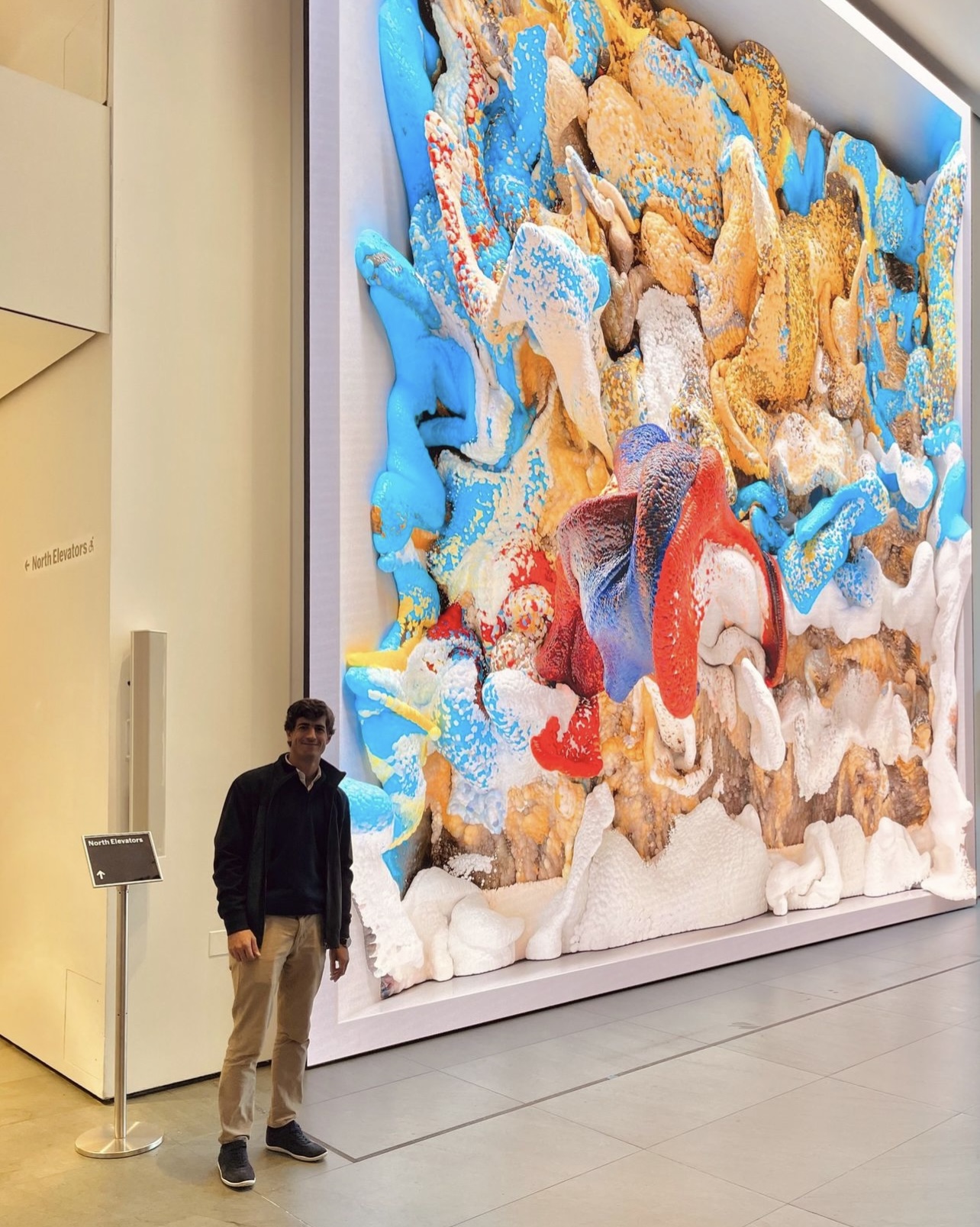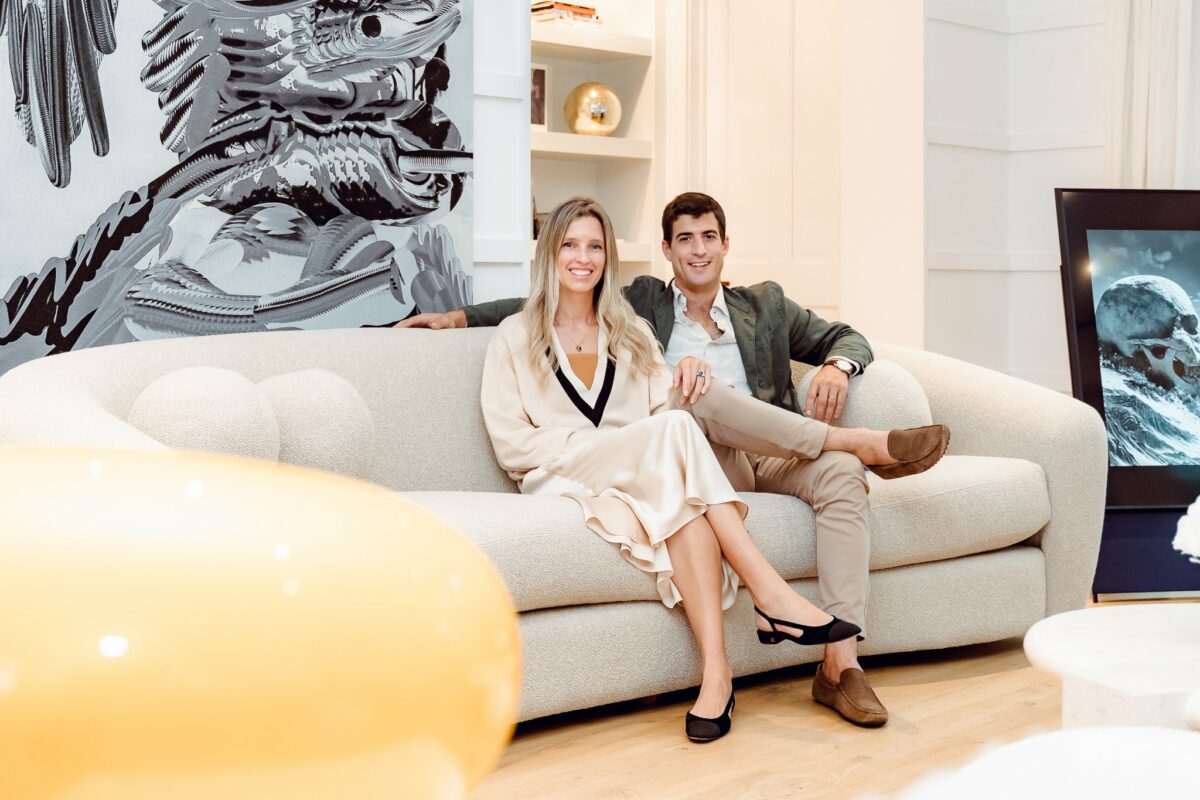When it comes to traditional art collectors who have found success in web3, Pablo Rodriguez-Fraile is in rare company.
As the proprietor of the RFC Art Collection alongside his wife Desiree Casoni, Rodriguez-Fraile has consistently been early to collecting many of the biggest names in onchain art, including blue-chip artists Beeple and Refik Anadol.
Boasting more than 2,000 artworks with a self-described focus on “sophisticated, tokenized digital art,” Rodriguez-Fraile made headlines last year with the landmark co-donation of Anadol’s “Unsupervised – Machine Hallucinations – MoMA” to the Museum of Modern Art (MoMA) — the first tokenized artwork to enter its permanent collection.
In addition to championing artists like Andrés Reisinger and Quayola, Rodriguez-Frailer has never shied away from sharing his unvarnished thoughts with his following — sparking debates for controversially declaring “crypto art is dead” and lamenting both the financialization of digital art and the burdens faced by collectors in the space.
We caught up with Rodriguez-Fraile for a candid nft now podcast interview to dive into his journey as a collector and unpack his beliefs about the digital art market’s present and what needs to change for the future.
nft now: Your $6.6 million sale of Beeple’s “Crossroads” (originally collected for $66,000) helped set up the landmark $69 million Christie’s sale a few months later. How did you discover and decide to support him?
Pablo Rodriguez-Fraile: It’s very important to know our decisions are driven by cultural considerations rather than monetary. Many think I do this for a living; I don’t. It’s a passion for my wife and me, investing more into the space than we’ve taken out. Our approach to acquiring work isn’t just about liking a piece but understanding the artist’s vision, tools, and narrative, leading us to support artists long-term with a comprehensive collection of their works.
Our discovery and support of Beeple was methodical, recognizing his potential early on through discussions before he entered the space, identifying him as a force with the discipline, innovation, and narrative to lead in this digital age. Beeple’s history of almost 15 years as a digital pioneer and his personality convinced us of his importance to the ecosystem. Thus, supporting him through his first auction was a clear decision, despite the initial $66,000 price tag raising eyebrows at the time.
This wasn’t about the financial return, although no one dislikes money. The decision to sell later at a significant profit was meant to demonstrate digital art’s tangible value, anticipating it would catalyze further interest and valuations in the digital art space, as seen with the subsequent $69 million sale. This was part of a broader strategy to elevate the digital art ecosystem, reflecting a conviction in the artistic and cultural significance of our actions.

You received some backlash over recent tweets about the relationship between artists and collectors, particularly that artists should prioritize loyalty. What did you mean by that?
As collectors, we have the development of culture and artists as our utmost priority. One thing that is dangerous about this ecosystem is that we have made all of the artists into deities of this world, where everything that they say and do is always unquestionably perfect. We have somewhat forgotten there are two sides to this equation. We can elevate artists as much as we want, but if we don’t also consider the collectors along the way, then we’re going to see some situations like what we saw in the last few months with a lot less activity, collector saturation, and the negative consequences of that.
I believe that artists had an incredible time during the 2021 and early 2022 moment, solidifying their careers in many ways. But now, it is partly the artist’s responsibility to bring this to a sustainable and reasonable place for everyone involved. I’m seeing artists, as you mentioned, asking for the collectors and supporters to always be there for them, yet many artists are hopping from platform to platform, releasing new work every two weeks without much thought for their practice or the collectors that support them. We don’t have infinite capital, and most of us aren’t looking to flip artworks immediately. Continuing this trend will lead to less activity in relevant areas.
“We have made all of the artists into deities of this world, where everything that they say and do is always unquestionably perfect.”
PABLO RODRIGUEZ-FRAILE
I would urge artists to focus on fewer, more comprehensive, and thoughtful releases. We’re seeing major collector saturation, and it’s crucial, now more than ever, to not overburden collectors. We have far more artists and works than new collectors entering. If we want to be smart as an industry and movement, we need to find new ways to bring in more collectors.
I really tried to engage with the concept of loyalty, perhaps not the perfect term. It’s about needing more continuity, less about the immediate and more about long-term planning. Artists don’t have a roadmap, but it’s about bringing together strategies that make sense for the audience and collectors, acknowledging the reality that nobody likes to lose value. This also ties into the issue with platforms and galleries disappearing due to a lack of cohesive strategy amongst artists regarding releases and pricing. Loyalty here means a thoughtful, long-term engagement approach with the audience, considering all parties involved.

What do you believe needs to change about the digital art world to encourage greater adoption?
Many things I’ve mentioned, focusing on artists, but I believe collectors, including us, must also improve. We claim to advocate for a decentralized world where everyone can participate, yet there are still significant barriers for newcomers. It feels like a “mob mentality” — either you think like us and drink the Kool-Aid of decentralization, or you’re not really welcome here. And I think that’s a mistake. We need to be super inclusive. We need to make the infrastructure much easier. We need to make the payment rails. We need to price in US dollars. We need to have more physicality to the works. A key area we’re lacking is our physical presence in the institutional world. Despite engaging with various institutions and receiving interest, budget constraints often halt progress. Institutions often rely on support from donors and foundations, like the Knight Foundation, which has significantly advanced contemporary art. Our space lacks a dedicated institution or foundation for this purpose.
“It feels like a “mob mentality” — either you think like us and drink the Kool-Aid of decentralization, or you’re not really welcome here.”
PABLO RODRIGUEZ-FRAILE
I’m considering establishing a foundation to offer grants, support exhibitions, and expand digital art beyond our current echo chambers. This move is critical for bridging the gap between digital and traditional art worlds. Refik Anadol’s MoMA donation is a prime example of digital art’s potential to reach a broader audience. I’ve transformed my home into a showcase for digital art, hosting numerous visitors, demonstrating the immediate interest once the work is physically presented. I urge collectors to display art at home and artists to seek visibility in various venues. We must promote the tangibility of digital works, despite seeming paradoxical.
Moreover, supporting platforms that sustain artist communities is essential. Artists must understand the necessity of increased fees for platforms providing technical support, marketing, and showcasing. This doesn’t detract from the artists but ensures the ecosystem’s sustainability. While there are exploitative platforms, identifying and supporting beneficial ones is crucial for the art community’s growth. My perspective might be flawed, as I’ve been wrong before, but I’m convinced this path is essential for our evolution.

Let’s talk pricing. There’s an old saying in the space that 1 ETH = 1 ETH, but ETH looks a lot different at $4,000 than it does at $2,000. How should artists approach this?
Whenever Ether is volatile, as it is now, this conversation arises, as it has a few times in the last few years. Look back at the chain, look at what happened with artists at Super Rare during volatile times. When ETH moves up or down, it significantly impacts activity. Artists want to maintain ether pricing when it rises but shift to dollar parity when it drops, seeking consistency. In reality, if we aim for expansion, most new participants and collectors won’t solely think in Ether. Even active funds are denominated in US dollars. Stability and continuous growth trump all, achievable with a balanced US dollar pricing approach. Nothing has really changed in the artistic practice of the space for everything to just be 50% higher for everyone who comes in. It’s just not serious or sustainable.
“Nothing has really changed in the artistic practice of the space for everything to just be 50% higher for everyone who comes in. It’s just not serious or sustainable.”
PABLO RODRIGUEZ-FRAILE
And what happens then? Artists unable to sustain their collector base face a dilemma when reducing prices, potentially alienating recent buyers. I strongly advise artists to accept any form of payment but to think in US dollars for sustainability and clarity. As the space evolves, more platforms and galleries, even if accepting Ether, think in US dollar terms. This isn’t applicable to everything, but it should be. A closer look reveals a high correlation between market changes and Ether’s volatility. As Ether rises, the price of collections in Ether terms tends to drop, a trend likely to become more apparent over time. Thus, I highly recommend artists think less ether-centric to expand their audience, as the current system doesn’t effectively bring in new participants.
Last week you took out a $400,000 loan against one of your Beeple pieces. What’s the significance of that?
Taking this loan in US dollars was partly to start solidifying the practice of denominating transactions in US dollars, but also, the reason why I pursued this wasn’t primarily financial—I don’t urgently need the $400,000. It’s more about opening up the avenues for digital art and delving deeper into its potential. The volatility of Ether, with its significant fluctuations, presents a risk I wasn’t willing to take for a loan of this size, especially if Ether’s value increases, making the loan disproportionately expensive.
In our daily lives, we operate within a US dollar-denominated ecosystem, for everything from buying food to paying for gas. This loan was another step to underscore that digital artworks are tangible assets with staying power, capable of supporting more complex financial activities like loans, thereby promoting liquidity and encouraging further investment in the sector. This approach is essential for evolving the market infrastructure in a thoughtful manner, away from the volatility associated with cryptocurrencies.
This loan is historic, reflecting a significant moment similar to what Gmoney achieved with CryptoPunks but with a focus on fine art—a unique, one-of-one piece. By demonstrating that such pieces can secure substantial financial backing, we help establish their tangible value. This move was intended to broaden the ecosystem, encouraging support for artists and indicating the potential for digital art as a stable investment. While this has incurred some cost to me due to interest, it’s a necessary step to showcase the credibility and real asset value of digital art, hoping to inspire similar confidence and financial innovation within the space.

We share a desire to place digital art front and center. We did it in exhibiting Refik Anadol’s “Sense of Healing” at Gateway Miami, and you’ve done it with your donation of “Unsupervised” to the MoMA. What was the backstory there?
Congratulations on what you did here with Gateway Miami during Art Week, it was extraordinary. It was a great showcase of where we’re heading, emphasizing the need for shared experiences with art, which I believe are incredibly powerful and memorable for everyone involved.
Similarly, in 2021, we organized an important show in Miami where we brought Refik Anadol’s work to the beach, marking the first public art display of this nature and setting the stage for Refik’s introduction to a broader audience. This event was pivotal, attracting hundreds of thousands of people and demonstrating the potential of public art displays to captivate diverse audiences.
The success of this event led to discussions about hosting a physical exhibition at MoMA, a conversation that began organically and was initially about loaning the work for exhibition purposes. These discussions were facilitated by Casey Reas and Feral File, who had previously collaborated with Refik. The exhibition at MoMA turned out to be a resounding success, drawing in an audience from all backgrounds and ages, significantly different from MoMA’s usual demographic, and was extended multiple times due to its popularity, ultimately receiving almost three million visitors.
This experience at MoMA, particularly the farewell toast with the museum staff, was incredibly touching, with everyone acknowledging they had witnessed something unprecedented. Following this success, the conversation shifted towards adding the work to MoMA’s permanent collection, a decision not taken lightly given its historical significance and the monetary value attached. Nevertheless, Ryan [Zurrer] from 1of1 and I felt that donating the piece would serve as a significant catalyst in demonstrating the relevance and permanence of digital art. The process, though organic, was a series of deliberate steps, culminating in a contribution we’re profoundly proud of, marking a milestone in the acceptance and recognition of digital art in the traditional art world.
Editor’s note: This interview transcript has been edited for concision and clarity. For the full and uncut interview, listen to our podcast episode with Pablo Rodriguez-Fraile.
The post How Pablo Rodriguez-Fraile Aims to Reshape the Digital Art World appeared first on nft now.







Leave a Reply